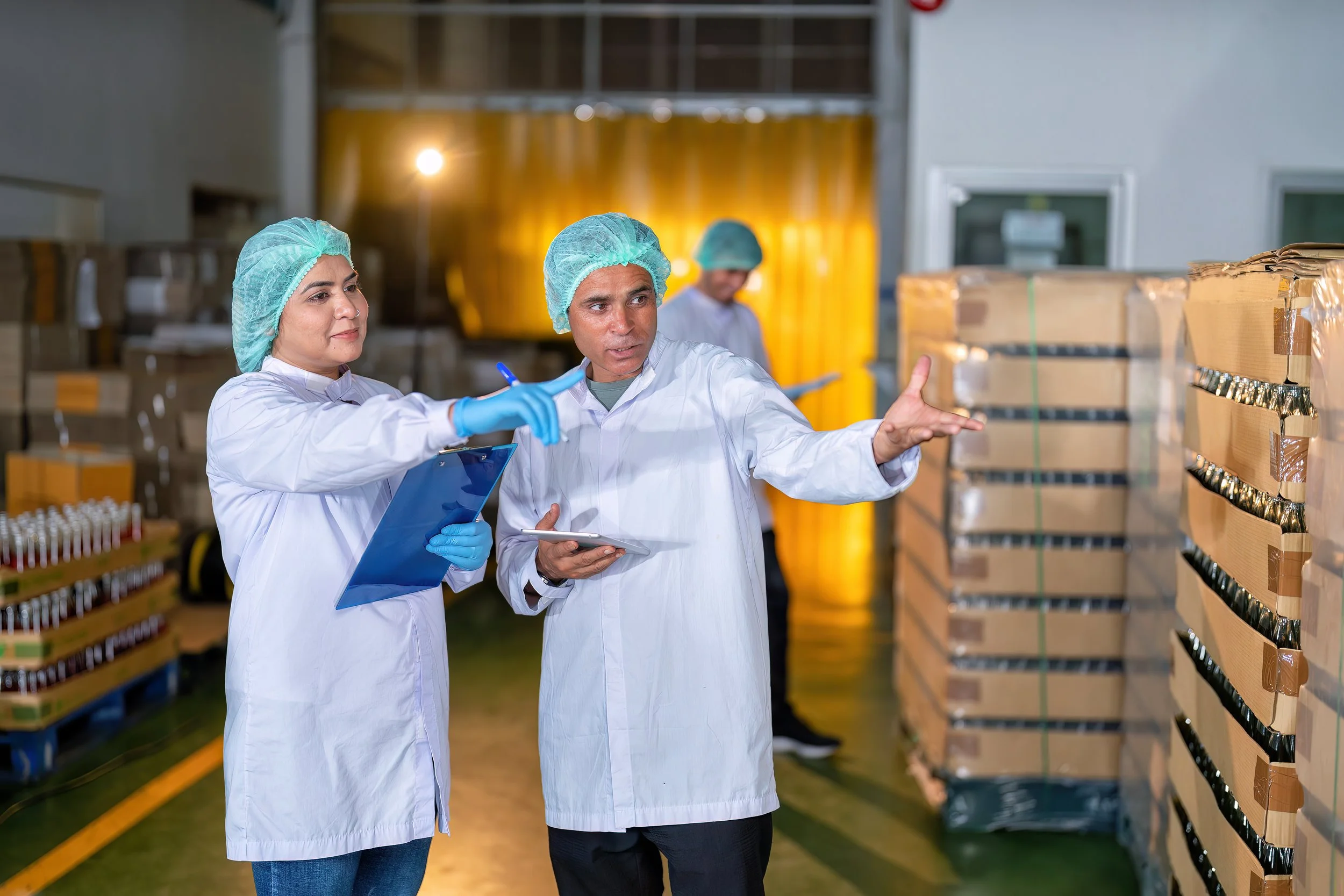There is an abundance of people interested in the inner workings of the baking industry.
However, few are actually aware of the intricate processes that contribute to it being a high-performing sector.
With that in mind, it’s worth exploring the role of quality testing in the baking industry to emphasise just how important it is.
What is quality testing in the baking industry?
Quality testing in the baking industry involves conducting a variety of tests to measure elements like gassing power, gas retention, and water absorption as well as assessments of crumb grain structure, texture and properties.
It is important to note quality testing fluctuates according to the type of food product and the results that need to be obtained.
To conduct proper quality tests, relevant machines and tools will also be relied upon to produce accurate results.
Why is quality testing important?
The purpose of quality testing is not just to ensure that a food product is of a high quality, but also to guarantee that any relevant standards are being met, legislation adhered to, and regulations followed.
In this sense, it is akin to a thorough screening process in which problems can be detected efficiently and quickly.
Quality testing is especially important when a whole batch of food items have been made and a problem is detected with that particular group because it can help correct the issue before these are sent to market (and directly to the consumer).
In a general context, quality testing is crucial for ensuring a food product is functioning properly and that there are no aesthetic issues or problems that will impact taste or consumption.
Furthermore, quality testing is an integral part of a food manufacturers' daily procedure because it helps to improve the quality and efficiency of a software development process as well as ensuring a reliable and high-performing software operation.
What are the benefits of quality testing in the baking industry?
Quality testing is mutually beneficial for food manufacturers and the consumer.
For those organisations operating in the baking sector, proper quality control of ingredients helps to achieve consistency across food products.
Not only does this enable them to stay ahead of the competition by maintaining a high level of quality, but it also helps to satisfy customers who are less likely to complain.
Furthermore, quality control helps food organisations to combat the presence of anything unsafe in their products that shouldn't be there. This should help to mitigate any risks associated with their food products and safeguard the consumer from any potential health hazards.
Quality control can also be beneficial for gathering information for nutritional labels by offering details that can influence shelf life as well as baking stability and quality.
Of course, by improving the quality of their recipes, they are also able to stay ahead of trends and get an insight into new developments changing the industry.
How can C-Cell help with quality testing?
Thankfully, in this modern landscape, there are applications like C-Cell that can simplify the process of carrying out quality control.
As an advanced and dynamic solution owned and distributed by Calibre Control, C-Cell is optimised to measure the quality of bakery products.
It can also be used in a variety of sub categories in the food industry like wheat breeders, flour millers, ingredient producers, snack food producers and chocolate producers.
As many food producers want to be thorough in their approach to quality testing, C-Cell is ideal for providing detailed results from internal structure and slice shape measurements to in-depth bread scoring and internal feature analysis.
The results of these tests are also straightforward to comprehend because they are sorted into categories like size, shape, cell numbers, cell orientation and colour.
In the baked goods industry, crumb structure is incredibly important. It is comprised of the internal cell shape, the uniformity of cells, the cell’s size and the thickness of the cell walls.
With C-Cell, food manufacturers are able to gain an insight into process condition as well as crumb structure, which is an integral facet of high-quality baking.
Crumb structure can have a profound effect on how a food product looks, feels and tastes.
If a food producer neglects to analyse the crumb structure, it can be impact negatively on their profitability and their reputation.
C-Cell offers an efficient examination of a baked product using detailed crumb analysis, providing food manufacturers a glimpse of the internal cellular structure of the sample.
This method of analysis is incredibly beneficial because by using a baking quality analyser to determine crumb structure, manufacturers can save time and money.
Using a modern tool like C-Cell will also mean that those in the baked goods industry who are dedicated to making high-quality products will not have to rely on outdated or less accurate methods of examining the textural properties of baked goods.
What are the benefits of C-Cell?
As an analytical tool, C-Cell is extremely advantageous for food manufacturers and those consuming their products.
First, it has strengthened the future of food production by making quality control more readily available for those operating in the baked good industry.
In terms of the output, C-Cell also increases production and helps to keep human error to a minimum. By constantly and consistently helping to identify issues and inconsistencies with products, it can help food manufacturers to modify and refine their processes.
Of course, quality control using C-Cell is also beneficial on a global scale because when consistency is ensured across products, there is less waste.
Given this tool also guarantees that commercial bakeries are adhering to worldwide standards and regulations, the result is food that is void of defects which ultimately has a positive impact on the environment.
This modern solution also encourages food manufacturers to strive for improvement because it alerts them to occasions when they need to use better ingredients to make an upgraded baked good.
Because those in the baked goods industry also need to meet certain goals, C-Cell helps them do so by making the process of manufacturing more systematic and structured.
Productivity also has the potential to increase with C-Cell because it can be used for a wide range of food products without having to buy several different machines for various baked goods. This can be cost-effective because manufacturers don't have to allocate spending on a range of different technological solutions.
Of course, C-Cell also stores and retains all of the information collected, which means that those working in bakeries don't have to start this process from scratch.
To elaborate, because the majority of bakeries using C-Cell are analysing crumb structure, they are able to explore the impact of wheat variety on baking quality as well as the significance of wheat and non-wheat components in bread.
C-Cell also allows bakers to assess the impact of dough conditioners and emulsifiers on the sensory qualities of bread.
Although the range that C-Cell can cover may seem broad to those who are new to the baked goods industry, the attention to detail which can be achieved with this machine is instrumental in obtaining results that will help them prevail over their competition.
In addition, C-Cell is also incredibly simple to use as all you have to do is load the sample into the tray and close it.
C-Cell then captures a high-resolution digital image of the sample, which may be a slice of bread or another baked item, before assessing it on a granular level by taking into consideration the colour, the number and size of the cells or holes, and the dimensions of that slice.
Viewing these results is also straightforward because the images captured of the sample can be viewed conveniently on a range of devices with relevant statistics and reports displayed clearly.
Want to make quality testing even easier?
At Calibre Control, we believe that quality testing in the baking industry is of the utmost importance.
However, we are passionate about quality control being a straightforward and simple process that doesn't interfere with food production.
For those on a mission to integrate modern technology like C-Cell to improve the way baked good products are analysed, it is easier than ever to do so.
Although the process of carrying out quality control can feel overwhelming, when bakeries have reliable and efficient equipment such as the Baking Quality Analyser, it is instantly less daunting.
For more information about how to analyse baked goods using the C-Cell baking quality analyser and the advantages of doing so, contact Calibre Control today. For any product enquiries, get in touch either by phone on 01925 860 401 or complete our contact form.








